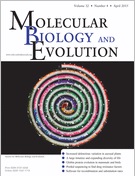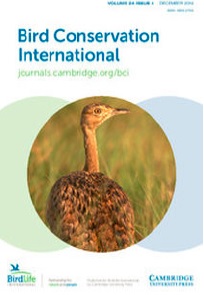|
Alumni Publications

Roberto, I.J., Brito, L., & Thomé, M.T.C. (2014). A New Species of Rhinella (Anura: Bufonidae) from Northeastern Brazil. South American Journal of Herpetology 9(3): 190-199 doi: 10.2994/SAJH-D-13-00028.1
We describe a new species of anuran belonging to the Rhinella crucifer species group, from a relictual Atlantic Forest fragment located at the Serra de Baturité mountain range, State of Ceará, Northeastern Brazil. The new species is characterized by narrow and elongated parotoid glands, overhanging the lateral edges of the body dorsally; a conspicuous fringe on the ventral surface of the tarsus; yellow marks on the flanks of the posterior surface of thighs and cloaca; integument of the dorsum and limbs with round warts with many keratinized black spines. Tadpoles have a kidney-shaped nostril, with a dorsal fin that begins low and rises acutely once passed by the body limits; oral disc laterally emarginated, sub-marginal papillae clumped, dark papillae in some specimens. In addition, we describe call parameters of the new species, provide information regarding its natural history, and comment on its conservation status.

Foley, N.M., Thong, V.D., Soisook, P., Goodman, S.M., Armstrong, K.N., Jacobs, D., Puechmaille, S.J., & Teeling, E.C. (2014). How and why overcome the impediments to resolution: lessons from rhinolophid and hipposiderid bats. Molecular Biology and Evolution doi:10.1093/molbev/msu329
The phylogenetic and taxonomic relationships among the Old Wold leaf-nosed bats (Hipposideridae) and the closely related horseshoe bats (Rhinolophidae) remain unresolved. In this study, we generated a novel ~10 kb molecular dataset of 19 nuclear exon and intron gene fragments for 40 bat species to elucidate the phylogenetic relationships within the families Rhinolophidae and Hipposideridae. We estimated divergence times and explored potential reasons for any incongruent phylogenetic signal. We demonstrated the effects of outlier taxa and genes on phylogenetic reconstructions and compared the relative performance of intron and exon data to resolve phylogenetic relationships. Phylogenetic analyses produced a well-resolved phylogeny, supporting the familial status of Hipposideridae and demonstrated the paraphyly of the largest genus, Hipposideros. A fossil-calibrated timetree and biogeographical analyses estimated that Rhinolophidae and Hipposideridae diverged in Africa during the Eocene 42 mya. The phylogram, the timetree and a unique retrotransposon insertion supported the elevation of the subtribe Rhinonycterina to family level and which is diagnosed herein...

Esteban, G.A., Bonaccorso, E., & Duivenvoorden, J.F. (2015). Multi-scale habitat use analysis and interspecific ecology of the Critically Endangered Black-breasted Puffleg Eriocnemis nigrivestis. Bird Conservation International, available on CJO2015. doi:10.1017/S0959270914000367
The Black-breasted Puffleg Eriocnemis nigrivestis is a hummingbird endemic to Ecuador and considered Critically Endangered, given its limited distribution, low population numbers, and ongoing habitat degradation. We investigated habitat use patterns using landscape and microhabitat variables. In addition, we explored a previously postulated competition hypothesis involving the Black-breasted Puffleg and the Gorgeted Sunangel Heliangelus strophianus. Our results suggest that landscape variables may play a role in the habitat selection process; specifically the distance to nearest forest border seems to have a significant effect on our habitat model. We speculate that, as the species is known to perform seasonal movements, the avoidance of forest border might reduce the physiological stress caused by altitudinal migration. At microhabitat level, Black-breasted Puffleg seems not sensitive to forest structure variables. Our findings suggest that ensuring forest tract connectivity, between the altitudinal extremes of the species’ range at the north-western flanks of the Pichincha volcano, might be crucial for survival of the species during its annual cycle. However, non-metric multidimensional scaling (NMDS) indicates that Black-breasted Puffleg and the Gorgeted Sunangel do not overlap spatially, but this finding is not conclusive considering our field observations.
See all alumni publications
|